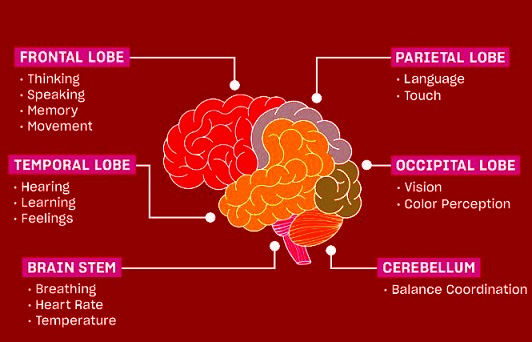Nikhil Prasad Fact checked by:Thailand Medical News Team Nov 17, 2024 5 months, 3 weeks, 1 day, 5 hours, 44 minutes ago
Medical News: The brain does more than just thinking - it runs the show for your body, managing everything from emotions to how you breathe and keep your heart beating. A recent study led by researchers from the University of Málaga, Spain, dives deep into how two specific brain areas - the dorsomedial hypothalamic nucleus (DMH) and the perifornical area (PeF) - act as central hubs for controlling heart and lung activity, especially during stress.
 The Brain's Role in Heart and Breathing Control
The Brain's Role in Heart and Breathing Control
This
Medical News report sheds light on how these parts of the brain play a crucial role in your body's stress response and might even be the key to treating heart-related conditions. The findings emphasize that these brain areas don’t just work in isolation; instead, they are part of a vast, interconnected network that handles both fight-or-flight reactions and everyday bodily adjustments.
The Stress Response: A Lifesaver Turned Modern-Day Threat
Stress is our body's natural alarm system. When you face a threatening situation, your brain triggers rapid changes - your heart races, breathing quickens, and blood pressure rises. While these responses are designed to help you escape danger, in today's world, chronic stress has turned this lifesaving mechanism into a health risk.
The DMH and PeF in the hypothalamus play a starring role here. These brain regions fine-tune the autonomic nervous system, which manages involuntary actions like heart rate and respiration. Their activity ensures that the body is ready for action during emergencies, but prolonged activation due to chronic stress can lead to issues like high blood pressure and heart problems.
Exploring the DMH and PeF Pathways
The study from Málaga researchers reveals how the DMH and PeF work with other parts of the brain to control your body’s response to challenges. For example:
-Connections to the Brainstem: These areas communicate with brainstem centers to regulate heartbeat, blood pressure, and breathing rhythm.
-Role in Stress Responses: The DMH and PeF help coordinate cardiovascular and respiratory changes, ensuring you get enough oxygen and blood flow during stressful times.
Interestingly, these areas also adjust baroreceptor reflexes - your body’s way of keeping blood pressure stable - even when faced with sudden changes.
From Defense to Disease: Modern Implications
While these systems evolved to help us survive danger, the study highlights how they might now contribute to modern health problems. For example:
-Prolonged stress can overwork the DMH and PeF, leading to high blood pressure, heart arrhythmias, and other cardiovascular conditions.
-Emotional and psychological stress can activate these brain regions, showing a direct link between mental health and physical health.
Understanding how these pathways operate opens the door to potential therapies targeting stress-induced heart and lung conditions.
Key Study Findings: How It All Works
The researchers discovered some fascinating details about the DMH and PeF:
-Brain Inputs: These areas receive signals from the cortex and limbic system, which handle emotions and decision-making. This means your feelings and thoughts can directly impact your heart and breathing.
-Communication Channels: The DMH and PeF send messages to brainstem centers responsible for autonomic functions. These messages control everything from heart rate spikes during stress to slower, steady breathing during rest.
-Chemical Messengers: Neurotransmitters like glutamate play a role in activating or calming these regions, allowing the brain to fine-tune its responses.
This interconnected system ensures that your body reacts appropriately to everything from a sprint to catch the bus to a life-threatening emergency.
Future Therapies: Targeting the Stress Network
The DMH and PeF are more than just control centers - they are potential targets for treating chronic stress-related disorders. By understanding the exact pathways and chemicals involved, researchers hope to develop treatments that could:
-Block excessive stress responses.
-Lower the risk of stress-related heart conditions.
-Improve overall autonomic stability in individuals prone to high blood pressure or anxiety disorders.
Conclusion: What This Means for You
This study shows that two small regions in the brain, the DMH and PeF, are essential for managing your heart and lungs, especially under stress. While their role in survival is undeniable, their overactivation in modern-day stress scenarios poses health risks.
By mapping these pathways and understanding their functions, researchers are paving the way for better treatments for cardiovascular and respiratory diseases linked to stress.
The study findings were published in the peer-reviewed journal: Biology.
https://www.mdpi.com/2079-7737/13/11/933
For the latest Medical Research news, keep on logging to Thailand
Medical News.
Read Also:
https://www.thailandmedical.news/news/how-tdp-43-spreads-in-brain-diseases-like-a-prion
https://www.thailandmedical.news/news/unlocking-the-role-of-peroxisomes-in-brain-inflammation
